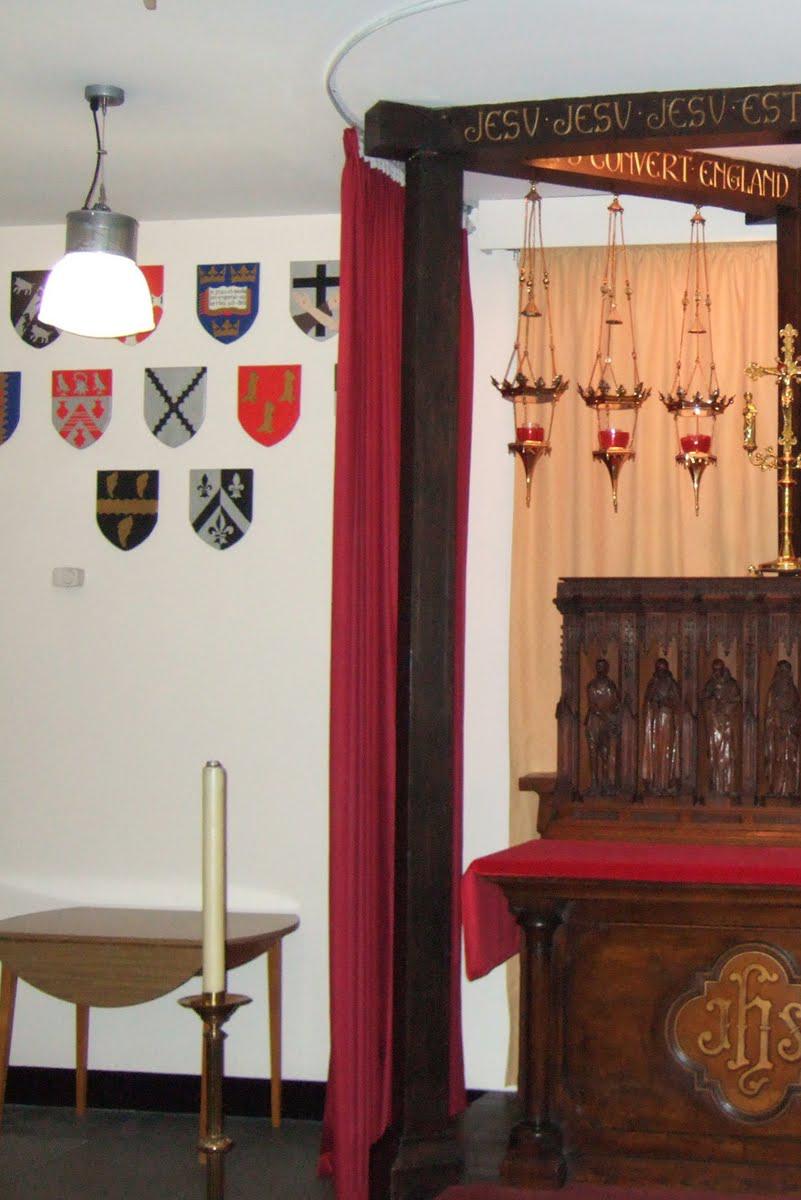
9 minute read
English Pilgrimages Part 2
By Harry Robertson
LONDON – The Martyrs of Tyburn
Advertisement
‘…I saw underneath the altar the souls of those who had been slain because of the word of God, and because of the testimony which they had maintained…’ (Revelation 6:9) For more than six hundred years from 1196, the wooden gallows situated at Tyburn Village, near where Marble Arch in London now is, was the hanging place for as many as 50,000 criminals, traitors, political foes and rebels.
The location of the gallows, known as Tyburn Tree, is today marked by a circular plaque embedded into the pavement on a traffic island at the entry to Edgware Road.
Tyburn Tree gallows was also the path to sainthood for many Catholic Martyrs – between 1535 and 1681 around 400 Catholics were executed there, of whom 105 are considered martyrs. (The word ‘martyr’ comes from a word originally meaning ‘witness’ and the brave souls were witnessing to their faith in Jesus Christ by laying down their lives for Him).
Tyburn Tree Altar at Tyburn Convent
Not all of the martyrs’ names are recorded for history but the Martyrs' Shrine at Tyburn Convent honours more than 350 Catholic Martyrs (including the 105 known Tyburn Martyrs) who witnessed to their faith by dying for it during the Reformation.
The Shrine, with its Martyrs’ Altar, also includes a replica of the triangular frame gallows that was erected in 1571during the reign of Queen Elizabeth I. There are also relics of the Martyrs, displays, and a brief film history of the Tyburn Tree. Pilgrim groups may arrange to have Holy Mass celebrated in honour of the Martyrs and individuals are very welcome to visit and pray at the shrine. According to the Shrine website, among those honoured are: Edmund Campion: Jesuit, died at Tyburn 1st December 1581. A brilliant scholar at Oxford, Campion became a Catholic, and joined the Jesuits. He worked in Prague until 1580. He returned to England, where he led an adventurous life encouraging and reconciling Catholics and eluding priest-hunters. He was
imprisoned, tortured and sentenced to die. Oliver Plunkett: The last Tyburn Martyr, died at Tyburn 1st July 1681. Archbishop of Armagh and Primate of all Ireland, he was brought to London for a rigged trial, found guilty of treason and sentenced to die the traitor’s death. He was drawn to Tyburn on a hurdle in his pontifical robes.
John Roberts: Benedictine monk and Welshman, died at Tyburn 10th December, 1610. He became a monk at Valladolid and Compostela and went back to England in 1602. Imprisoned and exiled many times, he always returned. He worked hard for victims of the plague.
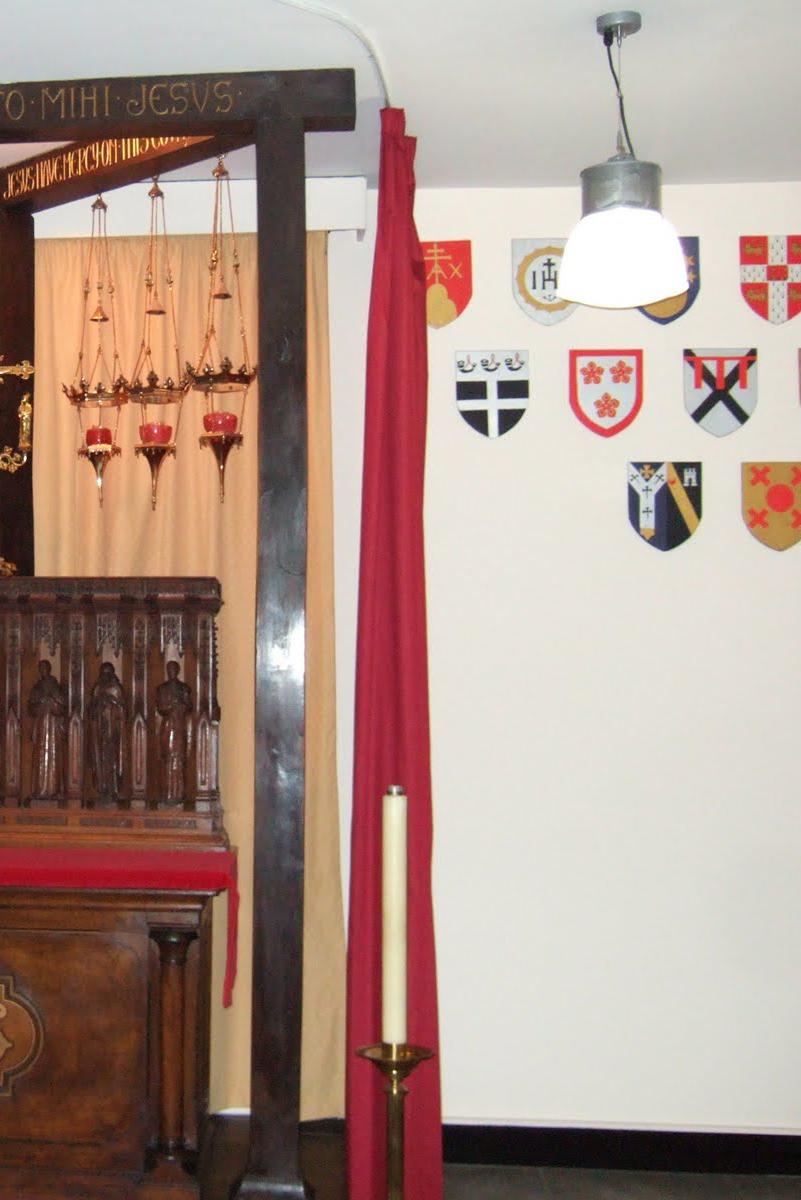
Tyburn Tree Altar at Tyburn Convent
He was finally arrested when celebrating Mass and taken to prison. Margaret Ward: Was hanged at Tyburn 30th August1588, for assisting and relieving a priest. She smuggled a rope to a priest in Bridewell prison and thus enabled him to escape. The rope was traced to her and she was arrested, hung up by the hands and flogged. Never in her life had she done anything of which she repented less. Ralph Sherwin: Priest who trained at the Venerable English College and died at Tyburn on 1st December 1581. Sentenced to death for allegedly conspiring to murder the Queen, Elizabeth I, he prayed for her beneath the gallows. John Houghton: Carthusian Prior, died 4th May 1535, because he would not acknowledge the supremacy of King Henry VIII over the Church in England. His last words were, as the executioner prepared to tear out his heart: “Good Jesus, what will you do with my heart?” Seven Carthusians died at Tyburn. (www.tyburnconvent.org.uk/martyrs-shrine)
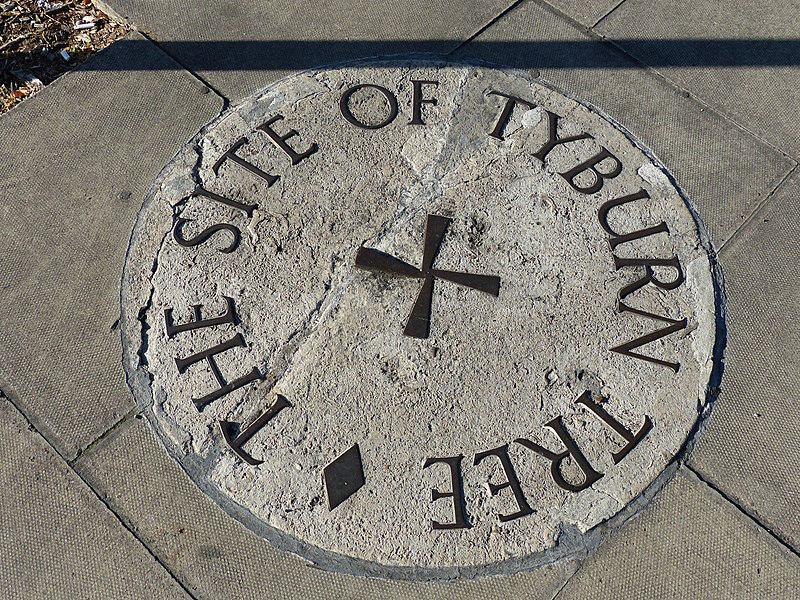
The site of the Tyburn Tree memorial
YORK – St Margaret Clitherow, the Pearl of York Daughter of the Sheriff of York and married in 1571, aged 15, to a wealthy butcher, Margaret converted to the Catholic faith three years later and, although her husband continued to be a member of the Protestant Established Church, he more than tolerated his wife’s new and dangerous attachment (his own brother was a Catholic priest).
Margaret was fined and then imprisoned for failing to attend the established Protestant church services –she gave birth to her third child while in jail and then went on pilgrimage to Tyburn gallows where several Catholic resisters had been hanged…but that was not the limit of her daring acts of resistance.
She hid fugitive priests in a variety of places; in a priest hole (hiding place) in her own house, in an adjoining house and in another house nearby that she rented. She even sent her older son abroad to the English College to train as a priest. Any of these actions could have led to a death sentence…and one did.
In 1585 her house was searched, the priest hole and a priest’s vestments were discovered and Margaret was arrested and charged with the crime of harbouring Catholic priests. Refusing to plead (possibly to prevent her children being forced to testify and being tortured in the process) she was found guilty and sentenced to death, although she was pregnant with her fourth child.
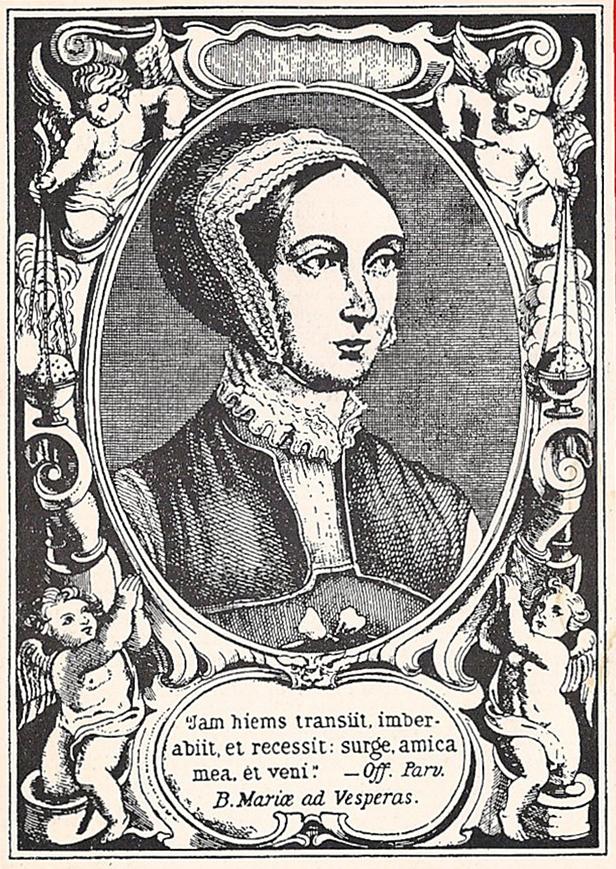
St Margaret of Clitheroe
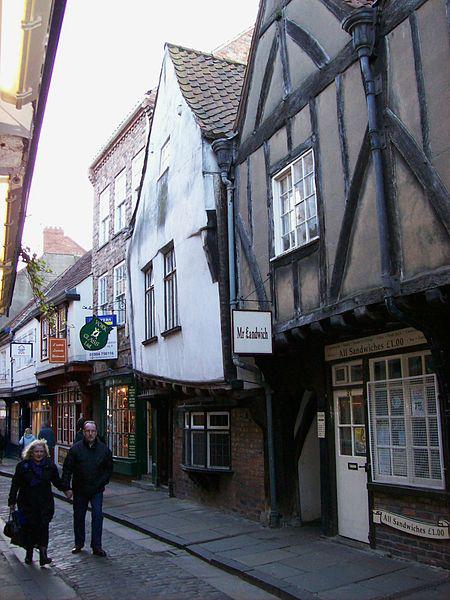
Tne Shambles, York
Her death was particularly gruesome. In 1586 she was placed under her own door and pressed to death by heavy rocks being placed on to the door - even Queen Elizabeth wrote a letter to the people of York stating that Margaret should have been spared that terrible fate.
Numbered among the Forty Martyrs of England & Wales who were canonised by Pope Paul VI in 1970, St Margaret Clitherow is patroness of the Catholic Women’s League, co-patroness of the Latin Mass Society and a patron of businesswomen, converts and martyrs.
Her shrine is at 35-36 The Shambles in York, where her husband had his butcher’s shop. The Shambles is a wonderfully atmospheric, narrow cobbled street with overhanging buildings that is said to be one of the best-preserved medieval shopping streets in Europe.
Pray for the strength of Margaret Clitherow to live out our faith in these challenging times. (www.stwilfridsyork.org.uk/shrine-st-margaret-clitherow.php )
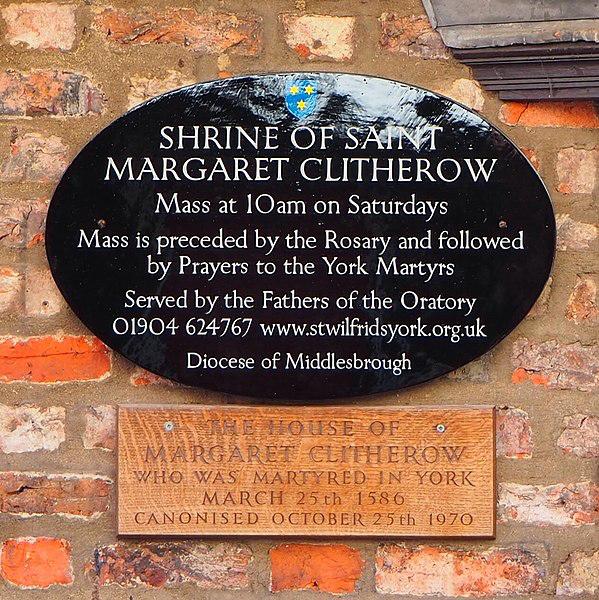
St. Margaret Clitheroe Shrine
FAVERSHAM – St Jude, the Saint of Desperate or Lost Cases Have you noticed the number of ‘thank you’ notices addressed to St Jude in the personal ads columns of Catholic newspapers? It is a tradition to publish thanks for favours received and, because St Jude is the patron saint for ‘desperate’ or ‘difficult’ cases, the subsequent appreciation for a successful outcome can be overwhelming and truly joyful.
So, who was St Jude? Jude (also referred to as Thaddeus, Judas Thaddaeus or Lebbaeus) was one of the Apostles, possibly even a relation of Jesus. Popular tradition holds that he preached the Gospel throughout the Middle East and Armenia before suffering martyrdom about 65 AD in Beirut.
Again, tradition relates that early pilgrims to his tomb found him a most powerful intercessor with reports of many miraculous cures. It is also claimed that God appeared to St Bridget of Sweden and to St Bernard, asking them to accept St Jude as 'The Patron Saint of the Impossible'.
Today, St Jude is venerated by many Christian denominations and by Moslems – and the Faversham Shrine of St Jude also reports visits by devout Hindus. Awareness of and devotion to St Jude in the London and South East region was increased when the Carmelite community began sending out St Jude prayer cards with their newsletters. The Second World War saw a huge increase in interest and led to the building of the shrine in the 1950s.
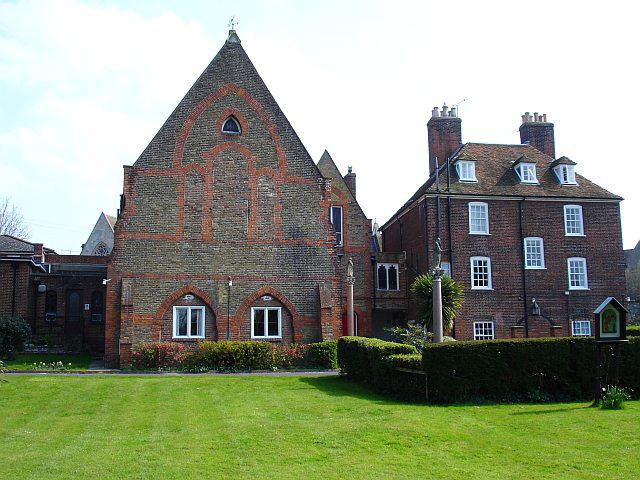
Whitefriars, Faversham
Pilgrims to the National Shrine of St Jude first pass through the parish church of Our Lady of Mount Carmel. Apart from the church’s beautiful murals and carvings, there are two shrines; a small one of the Holy Infant Jesus of Prague and one of Saint Thérèse of Lisieux.
The way to the Shrine of St Jude is decorated with stained glass, ceramic plaques and icons featuring religious subjects – with a strong focus on Carmelite Saints. Within the Inner Shrine is a sixteenth-century Spanish gilt and polychrome wood statue of St Jude and a reliquary that displays a bone fragment relic of St. Jude, which is used to bless oils for use in healing services. Alongside the shrine is a Repository offering gifts and souvenirs. (www.stjudeshrine.org.uk )
ARUNDEL - Shrine of St Philip Howard You do not need to travel to be a pilgrim. The Shrine of the martyr Earl of Arundel, St. Philip Howard (1557-1595) can be found in the North Transept of our own Arundel Cathedral.
A Cambridge graduate, handsome, quick-witted and articulate, Philip Howard must have dazzled when he first attended Queen Elizabeth’s court. Unfortunately, the pleasures of life turned his head and he neglected both his religious and his marital responsibilities. Aged 24, he attended a disputation between a group of Catholic figures, including the Jesuit Edmund Campion, and their Anglican adversaries, led by the Deans of St Paul’s and Windsor. Suffering from the effects of his torture and not allowed time or books for his preparation, Fr Campion nevertheless impressed the onlookers – including Philip Howard – so much that they looked for an acquittal.
Philip returned to Arundel shaken and troubled, considering the likely cost of arrest and death if he were to reconcile with the Catholic Church. He made his decision, was reconciled and, shortly afterwards sailed abroad, seeking religious liberty.
St Philip Howard

Betrayed, he was arrested at sea and lodged in the Tower of London. Found guilty of treason he was heavily fined and, following the defeat of the Spanish Armada in 1588, was further charged – falsely - with praying for a Spanish victory. Betrayed by former friends and lied about, he was found guilty and sentenced to a traitor’s death – to be hung, drawn and quartered. For the next seven years this sentence hung over him until, weakened by malnutrition (and possibly poisoned) he died in 1595, aged 38.
Philip Howard was spiritually transformed after being confined in the Tower for more than ten years, spending several hours each day in prayer and meditation. Those around him noted his patience and courtesy, even to unkind jailers. He was also comforted by the companionship of his pet dog, which visited other prisoners, including the Catholic priest Saint Robert Southwell, carrying messages between them. Dog lovers will be hearted to see that the Shrine statue of Saint Philip is accompanied by a statue of his dog. He must have been sorely tempted to relapse at times. Queen Elizabeth offered him his freedom and his fortune restored if he would only attend the Protestant Service - to which his response was the defiant ‘If my religion is the cause for which I suffer, I am sorry that I have but one life to lose.’ His mind-set may be judged by the words he scratched into a wall of his cell, words to the effect that ‘the more affliction we endure for Christ in this world, the more glory we shall obtain with Christ in the next. When you next attend Arundel Cathedral, spare a few minutes to visit the man who had great wealth and fortune and counted the nobility as his friends, who had so much to lose – but gave it all away in order to suffer and die for the Catholic faith. (www.arundelcathedral.uk)










